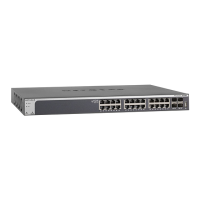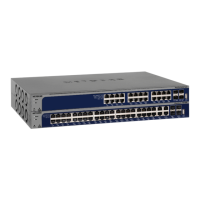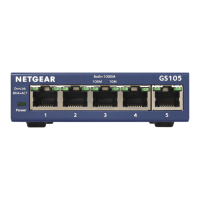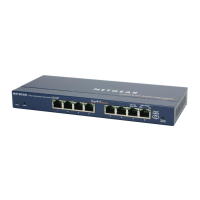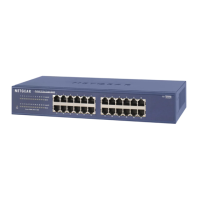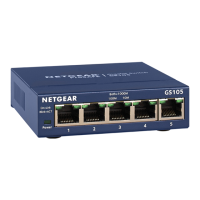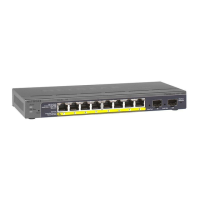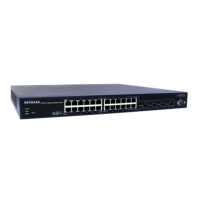Routing
91
XS728T ProSAFE 28-Port 10-Gigabit L2+ Smart Switch
The ARP cache is a table maintained locally in each station on a network. ARP cache entries
are learned by examining the source information in the ARP packet payload fields,
regardless of whether it is an ARP request or response. Thus, when an ARP request is
broadcast to all stations on a LAN segment or virtual LAN (VLAN), every recipient has the
opportunity to store the sender’s IP and MAC address in its respective ARP cache. The ARP
response, being unicast, is normally seen only by the requestor, who stores the sender
information in its ARP cache. Newer information always replaces existing content in the ARP
cache.
The NETGEAR switches support 1024 ARP entries. These entries include dynamic and
static ARP entries.
Devices can be moved in a network, which means the IP address that was at one time
associated with a certain MAC address is now found using a different MAC address, or might
have disappeared from the network altogether (that is, it has been reconfigured,
disconnected, or powered off). This leads to stale information in the ARP cache unless
entries are updated in reaction to new information seen on the network, periodically
refreshed to determine if an address still exists, or removed from the cache if the entry has
not been identified as a sender of an ARP packet during an ageout interval, specified through
configuration.
From the ARP menu, you can access features described in the following sections:
• ARP Cache
• ARP Entry Configuration
• Global ARP Configuration
• ARP Entry Management
ARP Cache
To view entries in the ARP table, a table of the remote connections most recently seen
by this switch.
1. Select Routing > ARP > Basic > ARP Cache.
The following ARP cache fields display:
• Interface. The routing interface associated with the ARP entry.
• IP Address. The associated IP address of a device on a subnet attached to one of the
switch's existing routing interfaces.
• MAC Address. The unicast MAC address of the attached device.
• Type. The type of the ARP entry. The possible values are:
• Local. An ARP entry associated with one of the switch’s routing interface’s MAC
addresses.
• Gateway. A dynamic ARP entry whose IP address is that of a router.
• Static. An ARP entry configured by the user.
• Dynamic. An ARP entry learned by the router.
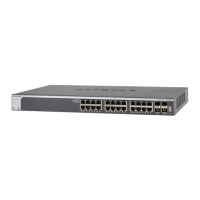
